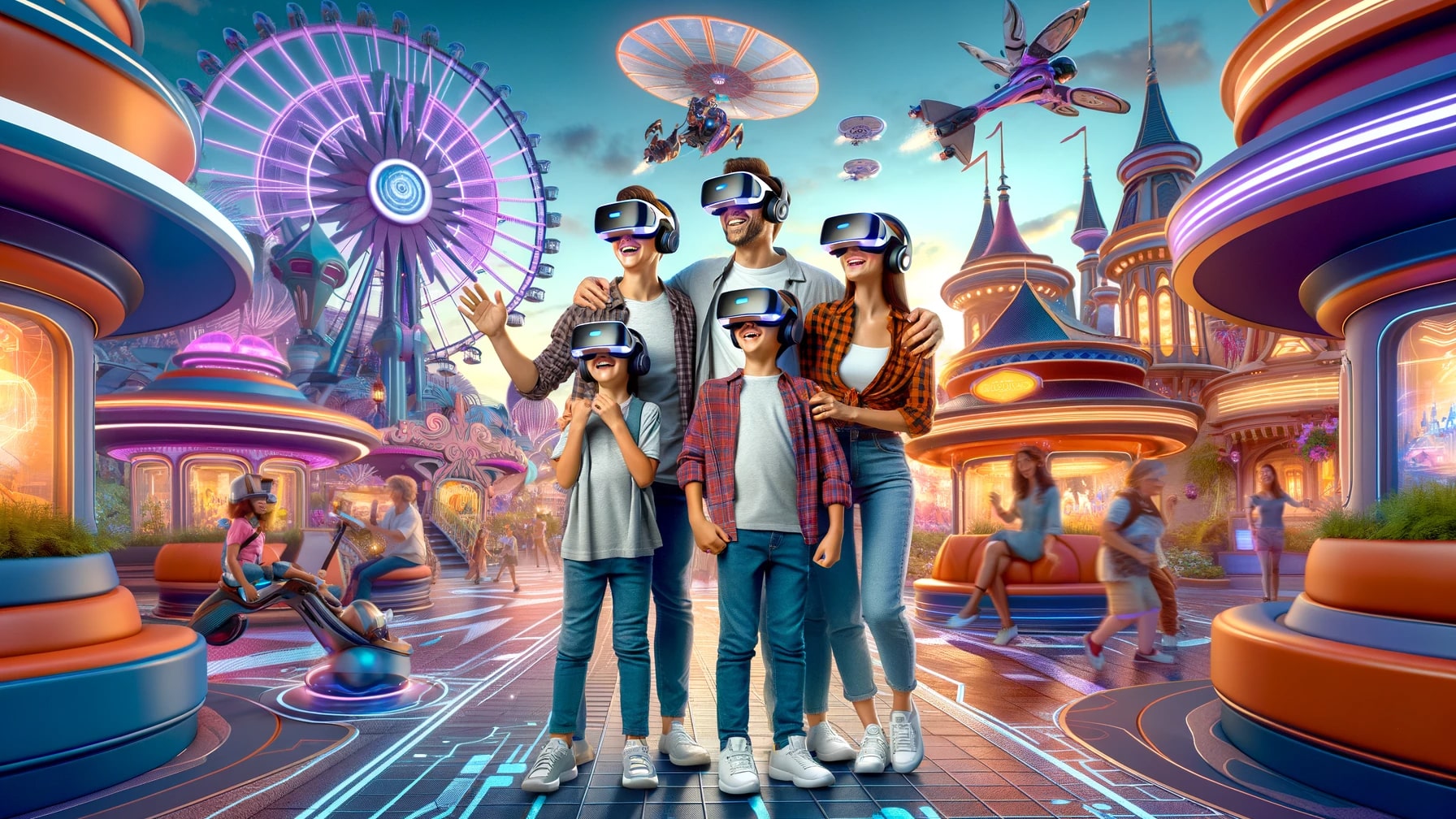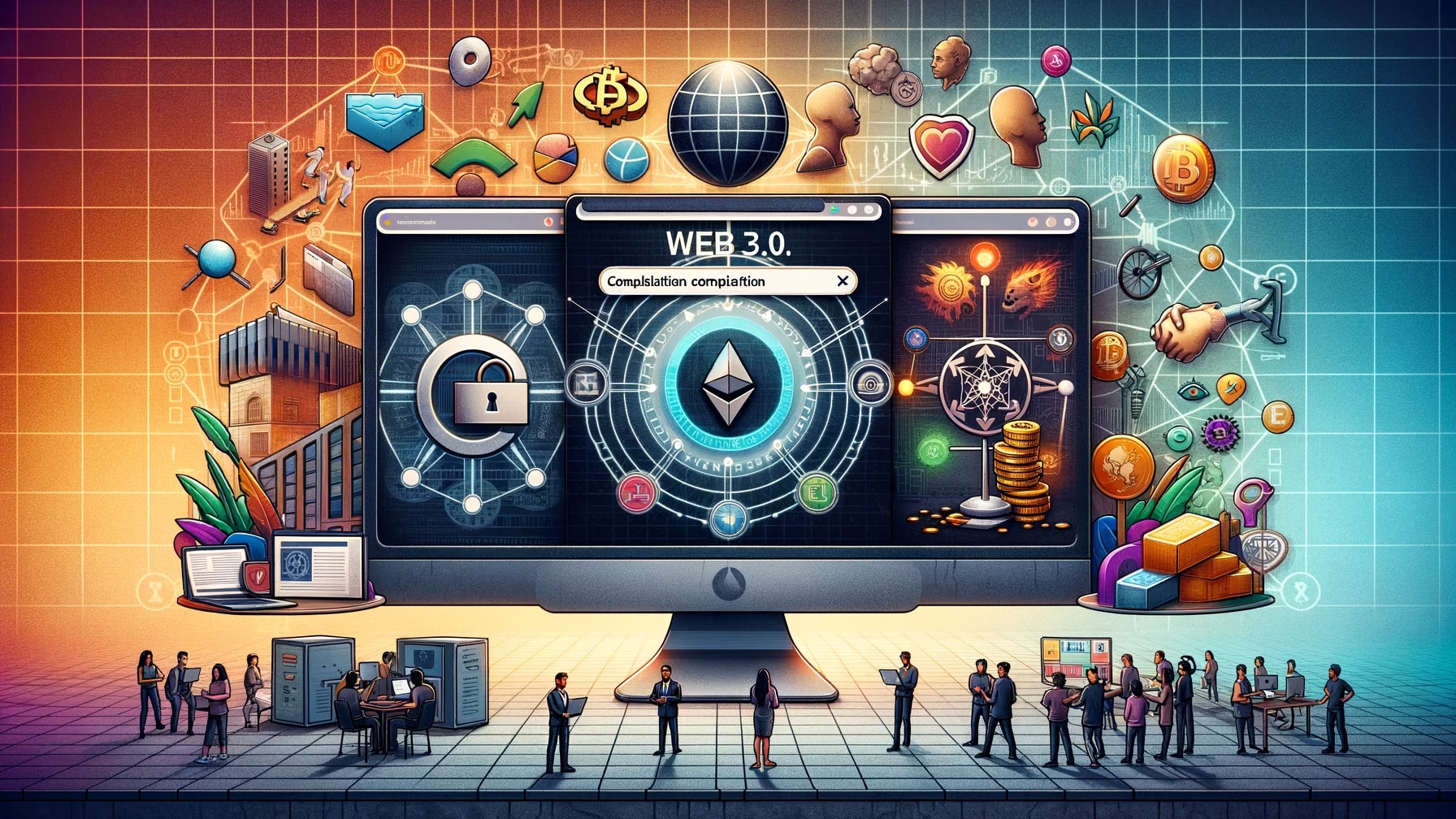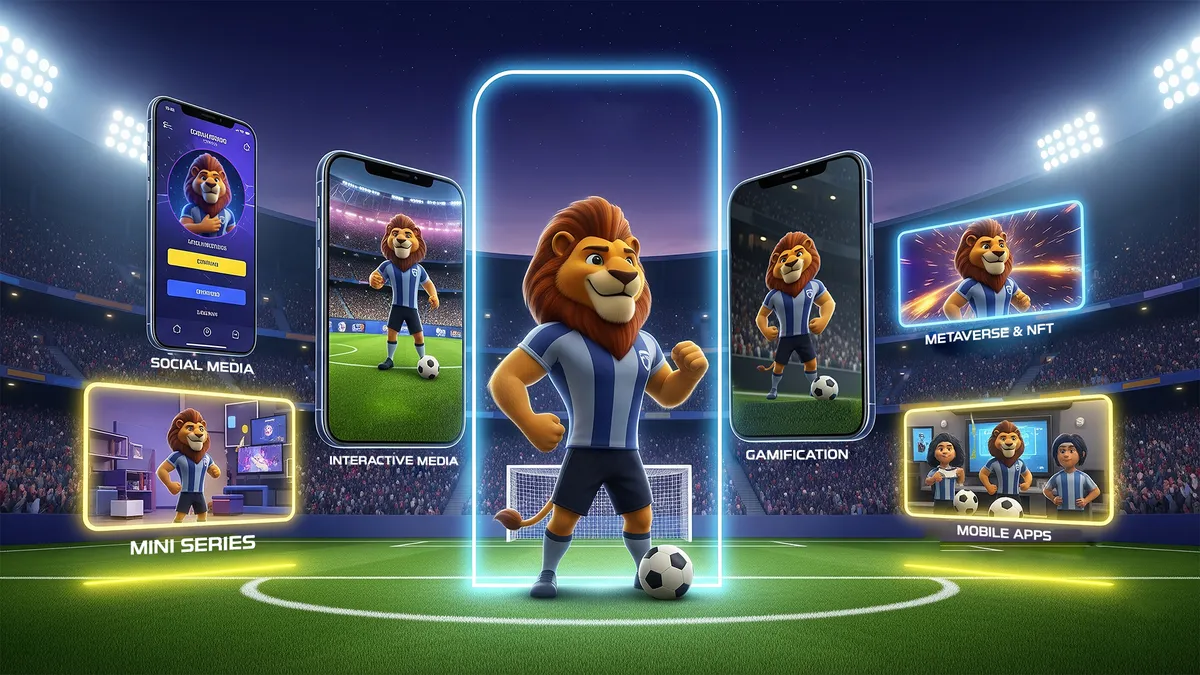
Have you ever wondered how the digital world is changing theme parks? A key part of this transformation involves their most famous residents. To understand their evolving role, it helps to first know what brand mascots are. From interactive meet-and-greets to the wonders of virtual reality, the digital era is transforming the entire theme park experience.
Get ready, because the future of fun is here and it’s dazzling!
The Digital Transformation of Consumer Behavior
In today’s world, theme parks are changing quickly because of the digital age. This change is mostly because of how people act and what they expect when they use technology, especially as we move from web 2.0 to web 3.0. This isn’t just about selling tickets to rides anymore; it’s about giving visitors a special experience.
From Web 2.0 to Web 3.0: A Big Change
Web 2.0 lets people use the internet to share and talk to each other, like on social networks. But now, with web 3.0, it’s more about making the experience feel real and personal. Theme parks use this by adding new tech like virtual reality (VR) to make visits more exciting and unique.

Selling Experiences, Not Just Tickets
Nowadays, people want to do things that feel special and personal to them. Theme parks understand this and are creating unique and fun stories for each visitor. This makes going to a theme park an unforgettable adventure.
Online Research and Buying Tickets Online
The journey to a theme park often starts online. People look up information, watch videos of the park, and read what others have said about it. Buying tickets online has also made things easier. Visitors can plan their day, buy special passes, and avoid long lines for popular rides. This makes the trip better for everyone.
The Power of Social Media
Social media is really important in shaping what people think and do. Theme parks use it to show off their attractions and talk to their visitors. People use it to share their own stories and opinions about the park. This back-and-forth between theme parks and visitors on social media helps make the park experience even better.
To conclude, the way people behave in the digital age has changed a lot, and theme parks are keeping up with these changes. They’re using new tech and ideas to make sure every visit is more than just a day out – it’s a special story.
Enhancing Customer Experience through Digital Innovation
In the world of theme parks, using new digital technology is a great way to make visits more fun and memorable. In this part of the article we are going to take a look at how theme parks can use technology like virtual reality (VR), augmented reality (AR), and interactive mobile apps to create amazing experiences for their visitors.
Using VR and AR for Real-Life Magic
Virtual reality (VR) and augmented reality (AR) are like magic tools that can take the fun of theme parks to a whole new level. VR can transport visitors to completely different worlds, all while they’re still in the park. Imagine putting on a VR headset and suddenly finding yourself in a space adventure or a fantasy land!
Ocean park has already used VR in its free fall roller coaster. Take a look at it:
Also, Snorri Snorkling VR game in Europa Park is one of the most famous VR games developed by theme parks.
Augmented reality (AR) is a bit different. It mixes real-life views with digital additions. For example, when you look through your phone or AR glasses, you might see a cartoon character appear next to you or a hidden treasure map overlaying the path you’re walking on. This makes everything feel more magical and exciting.
Interactive Mobile Apps: Your Personal Park Guide
Mobile apps can act like a personal guide for visitors in theme parks. These apps can help you find your way around, tell you how long the wait is for rides, and even let you order food without having to stand in line. Some apps make the visit even more fun with games and challenges you can do while walking around the park.
Interactive mobile apps can also tell stories and give you special tasks to complete. This turns a simple park visit into a fun adventure where you’re the hero of your own story.
By using digital technology like VR, AR, and mobile apps, theme parks can create unforgettable experiences that are both fun and interactive. These technologies help bring stories to life and make every visit unique and special.
Ocean park is one of the pioneers in having an application as a theme park.

Visitors can use the application to:
-Purchase ticket
-Check the waiting time
-Use eScheduler
-Buy eCoupon
-Play mini game (to get eCoupon)
-Explore the park
-Buy food
-Use the park map
How to adapt a theme park to the digital era?
Adapting a theme park to the digital era involves integrating technology like Leveraging Data, using systems for online ticketing and reservations, and many other things to enhance visitor experiences and improve guest satisfaction.
But what are the ways for adapting a theme park to the digital era? Here are some tips:
Leveraging Data for Personalized Marketing
Theme parks are finding new ways to make every visit special, and one key way is through using data. We are going to explain how important it is to understand what visitors like and how they behave, and how theme parks can use this information to make their marketing more personal and engaging.
Understanding Visitor Preferences with Data Analytics
Data analytics is like having a superpower to understand what visitors really want. Every time someone buys a ticket online, uses an app, or posts on social media, they leave little clues about what they enjoy. Theme parks can collect this data and use it to see patterns, like which rides are the most popular or what times of the year are busiest.
By understanding these patterns, theme parks can make better decisions. For example, they can find out which new rides might be a hit or what special events could bring more people to the park.
Making Marketing Personal with Data
Once theme parks understand what their visitors like, they can use this information to create marketing that speaks directly to each person. This is called personalized marketing.
For example, if you love roller coasters, the park might send you an email about a new roller coaster opening soon. Or, if you visit the park during the summer every year, they might offer you a special deal for summer tickets.
Personalized marketing makes people feel special because it shows that the theme park knows what they like. It also helps theme parks build a stronger connection with their visitors, making them more likely to come back and enjoy the park again.
Embracing Online Ticketing and Reservations
In the modern digital age, theme parks are making it easier for everyone to plan their visits. One of the best ways they’re doing this is through online ticketing and reservations. This section talks about why online tickets and reservations are great for both the visitors and the theme parks.

Benefits for Visitors and Theme Parks
Online ticketing is super convenient. Instead of standing in long lines at the park to buy tickets, you can do it from your phone or computer. This saves a lot of time and lets you plan your trip in advance. For families and groups, this is especially helpful because you can make sure everyone can get in on the day you want to visit.
For theme parks, online ticketing helps them know how many people will be coming each day. This way, they can prepare better, making sure they have enough staff and that everything runs smoothly. It also helps them plan for big crowds on busy days or special events.
Convenience and Efficiency of Digital Ticketing
Digital ticketing is not just about buying your ticket online; it’s also about making the whole experience smoother. With a digital ticket, you often get a QR code on your phone that you can just scan at the entrance. No more worrying about losing paper tickets!
Some parks even let you book times for popular rides or shows in advance. This means less time waiting in lines and more time having fun. Plus, if the park has a mobile app, you can often get real-time updates, like if a ride is temporarily closed, so you can plan your day better.
In short, online ticketing and reservations make going to theme parks a lot easier and more enjoyable. It’s a win-win for both the parks and the visitors. As theme parks adapt to the digital era, embracing these technologies is a key step in making every visit memorable and hassle-free.
Don’t underestimate the Role of Social Media and virtual Influencers
In the digital age, theme parks are discovering that social media and virtual influencers are powerful tools for getting the word out about their fun experiences. This part of the article will look at how these digital platforms can help promote theme parks and create exciting buzz among visitors.
Take “Shudu” for instance. The world’s first digital supermodel. Shudu has already worked with big brands such as Balmain.

Now that virtual influencers are so powerful, why not use them in theme parks’ marketing strategies?
The Power of Social Media and Influencer Marketing
Social media is like a huge online stage where theme parks can show off their attractions. When people see posts or videos of thrilling rides, fun shows, or colorful parades on platforms like Instagram, Facebook, or TikTok, it can make them want to visit the park too. This is where virtual influencers – characters created using computer graphics – come in. They can be used to share content about the park in a cool, fun way that grabs attention.
Virtual influencers are like the stars of the online world. They can reach a lot of people, especially younger audiences who spend a lot of time on social media. By having these influencers talk about a theme park, share their experiences, or even take virtual tours, parks can connect with lots of potential visitors in a way that feels fresh and modern.
User-Generated Content (UGC) and Viral Marketing
Another big part of social media is what we call user-generated content. This is when visitors to the park take their own photos or videos and share them online. It’s like free advertising for the park because it shows real people having a great time, which can encourage others to visit.
Also, sometimes this content can go viral, meaning it gets shared a lot and seen by even more people. This can happen when someone posts a really funny video, a beautiful photo, or a unique story about their visit. Viral marketing is powerful because it’s not just the park saying how great it is – it’s real visitors showing their own fun experiences.
In conclusion, social media and virtual influencers are key tools for theme parks in the digital era. They help spread the word about the park in a way that’s exciting and relatable, especially to younger people who are always online. By using these tools, theme parks can attract more visitors and create a buzz that keeps people talking.

The challenges and opportunities of going digital
Theme parks are facing both new challenges and amazing opportunities with going digital. Let’s explore what these are and how they can change the future of theme parks.
Challenges of Going Digital
Moving to a digital-focused strategy isn’t always easy for theme parks. One big challenge is keeping up with fast-changing technology. What’s popular and new today might be old news tomorrow. Theme parks have to stay on top of these changes to keep their visitors happy and excited.
Another challenge is making sure everyone can use this new technology. Not all visitors are tech-savvy, so theme parks need to make their apps, websites, and digital tools easy for everyone to use. Plus, all this digital stuff costs money. Parks have to spend wisely on technology that will really make a difference for their visitors.
Opportunities for Growth and Innovation
Despite these challenges, the digital era brings lots of opportunities for theme parks. One big opportunity is creating personalized experiences. With data and digital tools, parks can learn what each visitor likes and offer them special deals or suggest rides they’ll love. This makes every visit feel special.
Digital tools also open up new ways for parks to tell stories and create magic. With things like VR and AR, theme parks can take visitors to worlds they’ve only dreamed of. This could be anything from a deep-sea adventure to a journey through outer space.
Finally, going digital means theme parks can connect with visitors all year round, not just when they’re at the park. Through social media, email, and apps, parks can keep the excitement going and build a community of fans who share their love for the park.
In summary, while the shift to a digital strategy has its challenges, it also offers exciting chances for theme parks to grow and innovate. By embracing the digital era, parks can create unforgettable experiences and form stronger connections with their visitors.
Conclusion:
Marketing has always been about innovation and adaptation. We all need to adapt ourselves and our businesses to the new technologies or we are going to lose the game!
Theme parks have so much potential to use immersive technologies and enter the metaverse. In a world where everyone is looking for new ways of having fun, why not be among the firsts who bring joy to people’s lives?
Niluofar



